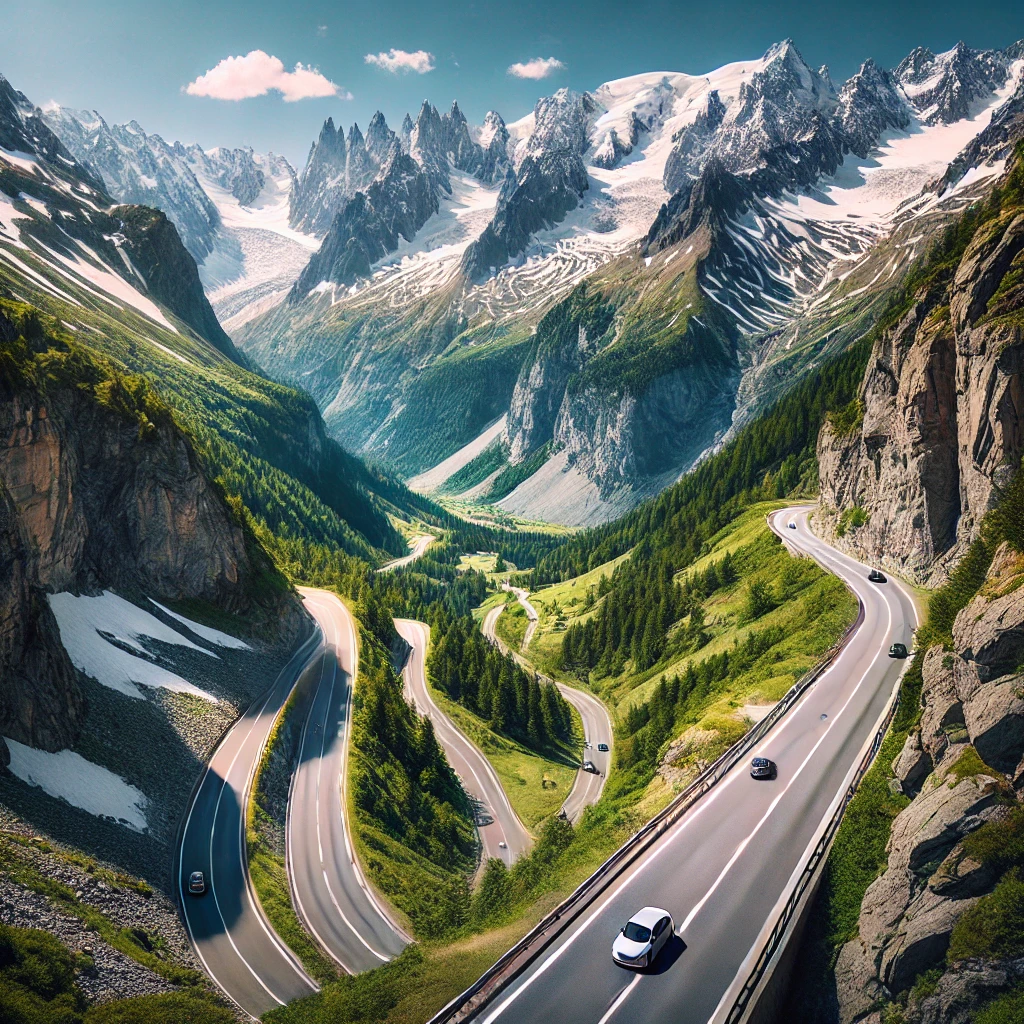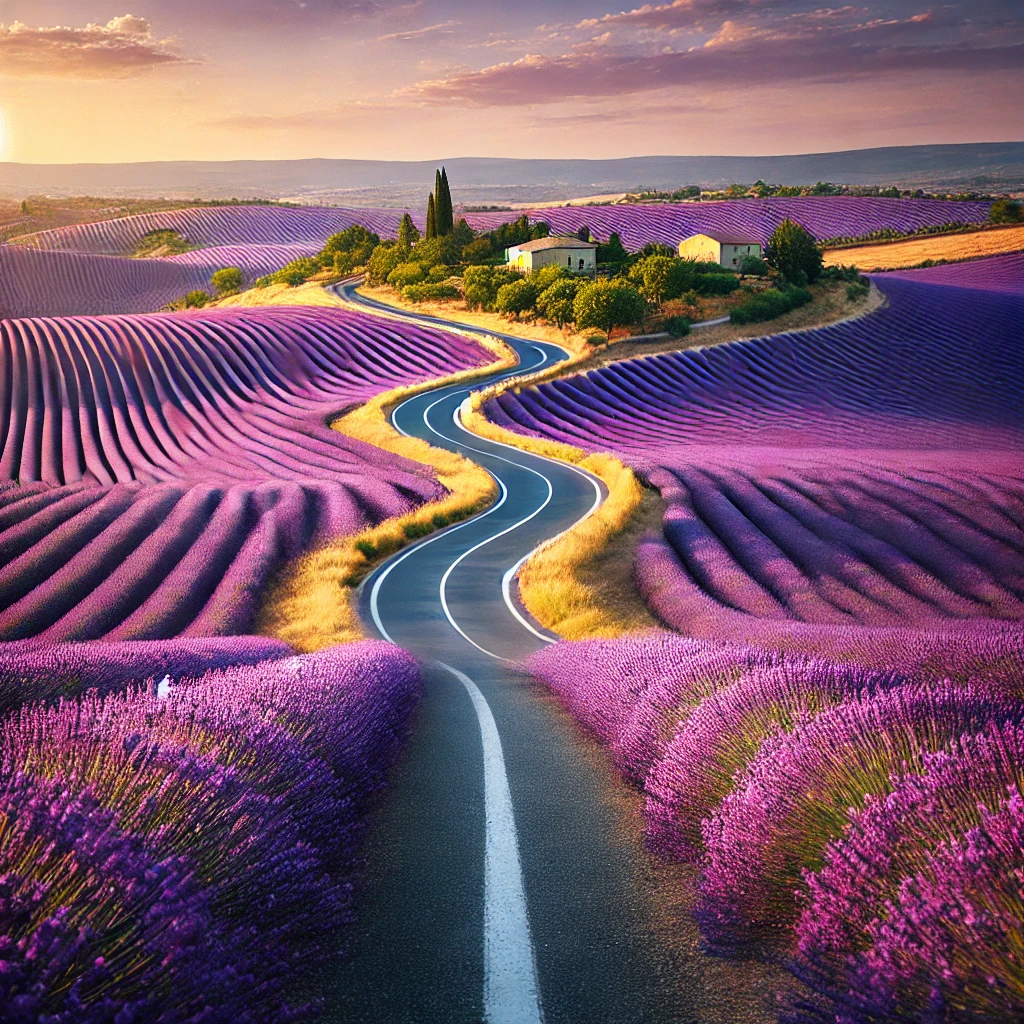Table of Contents

Introduction to Scenic Drives in France
France is renowned for its picturesque landscapes, historical landmarks, and cultural richness, making it an ideal destination for scenic drives. These road trips offer travelers an unparalleled opportunity to experience the country’s inherent beauty and heritage firsthand. Beyond the obvious visual appeal of rolling vineyards, expansive lavender fields, and jagged coastlines, these drives carve through regions steeped in historical significance and brimming with vibrant local culture.
Embarking on a scenic drive in France promises more than just a series of beautiful vistas. Many routes lead to quaint villages where time-honored traditions still flourish. Whether you find yourself meandering through the medieval towns of the Loire Valley or exploring the dramatic cliffs of the Normandy coast, the journey often brings you face-to-face with France’s rich past and diverse local customs.
Throughout this blog post, we will explore some of France’s most captivating routes. From the alpine beauty of the Route des Grandes Alpes to the sun-kissed charm of the French Riviera’s coastal roads, each drive offers its own unique attractions. The aromatic roads through Provence, adorned with endless lavender fields, contrast sharply with the dense forests and tranquil lakes that dot the romantic Alsace Wine Route. Finally, the winding drive along the Dordogne River reveals ancient castles and prehistoric caves that testify to the region’s profound historical depth.
Each of these drives not only highlights the scenic splendor of France but also provides a deeper connection to its cultural and historical tapestry. As we delve into the specifics of each route, you will discover how these journeys offer more than just a fleeting view—they provide an immersive and enriching experience of France’s multifaceted heritage.
The Route des Grandes Alpes is an iconic journey traversing France from the serene shores of Lake Geneva to the sparkling waters of the Mediterranean Sea. This 684-kilometer route presents travelers with an unmissable opportunity to behold some of the most scenic vistas the French Alps have to offer.
Among the most awe-inspiring highlights of this route are the mountain passes, including the renowned Col de l’Iseran and Col du Galibier. Col de l’Iseran, standing at an elevation of 2,764 meters, is the highest paved pass in the Alps and offers panoramic views of snow-capped peaks and verdant valleys. Another pivotal stop is the Col du Galibier, which peaks at 2,642 meters. Famous for its association with the Tour de France, it provides dramatic cliffside scenery that is sure to leave a lasting impression on any traveler.
The Route des Grandes Alpes also winds its way through a number of picturesque alpine villages. Places like Bonneval-sur-Arc and La Grave exude traditional French alpine charm, with their rustic stone chalets and inviting local cafes. These villages offer an authentic taste of Alpine life and are perfect for leisurely exploration. Summer months, from June to September, are particularly recommended for traversing this route, as the passes are snow-free and the weather is generally temperate.
Alongside the visual delights, the Route des Grandes Alpes tempts visitors with local culinary specialities. Alpine cheeses such as Beaufort and Reblochon, hearty dishes like tartiflette, and sweet treats such as blueberry tarts are must-tries. Stops at local markets and eateries provide both a respite from driving and an immersion into the region’s gastronomic heritage.
The Route des Grandes Alpes is not merely a drive but an enriching experience that combines some of the most stunning alpine scenery with cultural and culinary discoveries. Whether you are an avid motorist, a nature enthusiast, or a food lover, this route promises a journey that will linger in your memory long after the engine has been turned off.
Dordogne Valley
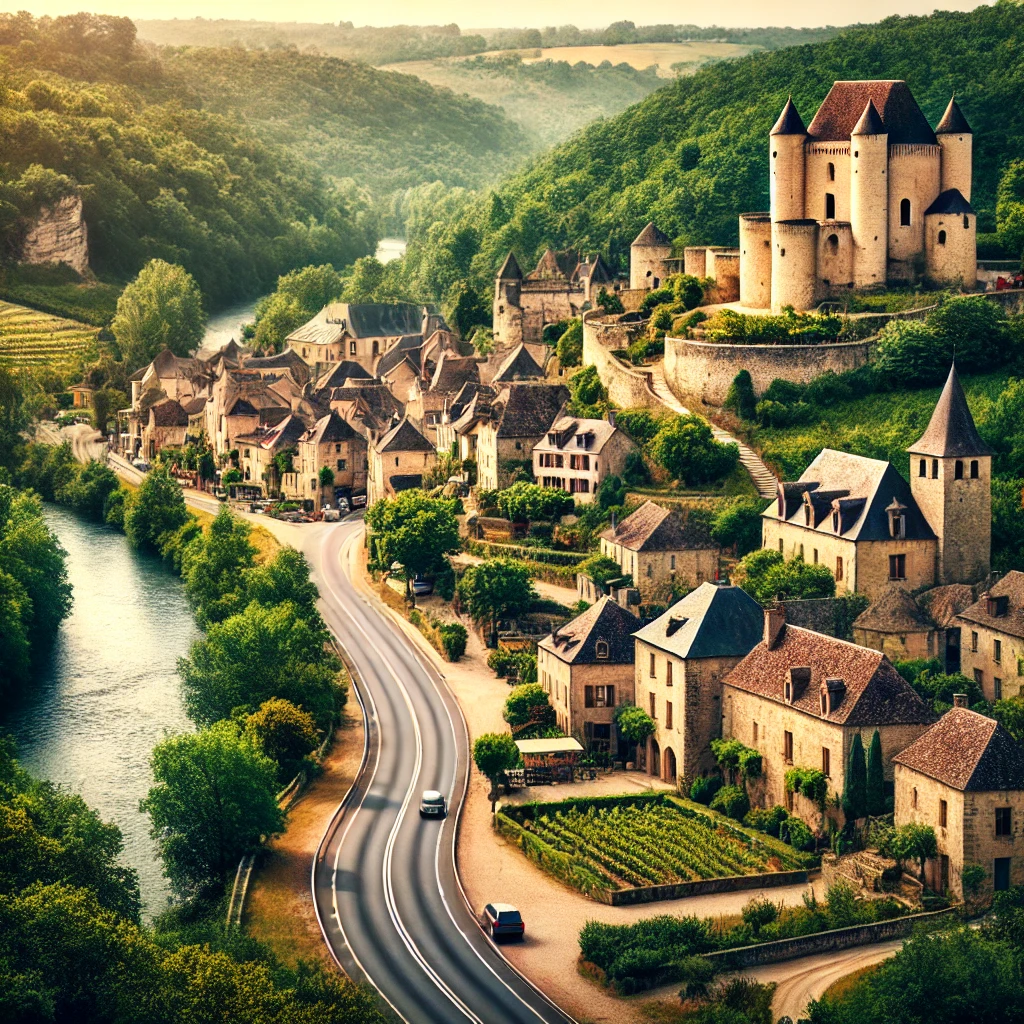
Nestled in the heart of southwestern France, the Dordogne Valley is an exquisite area renowned for its lush landscapes, historic castles, and charming villages. Driving through this picturesque valley offers more than just scenic views; it provides a journey through time and French culture.
A must-visit stop along the route is the medieval town of Sarlat-la-Canéda. Known for its impeccably preserved architecture, Sarlat is a revelation of history, with its narrow lanes, stunning stone buildings, and lively market where you can savor local specialties such as foie gras and truffles. The town square, illuminated in the evening, offers an enchanting backdrop for a leisurely stroll.
Not far from Sarlat, the prehistoric cave paintings at Lascaux are a testament to the valley’s ancient human heritage. These remarkable paintings, dating back around 17,000 years, depict various animals and abstract signs, offering a glimpse into early human life. While the original cave is closed to the public to preserve its delicate paintings, a meticulously crafted replica, Lascaux IV, allows visitors to experience these masterpieces in a controlled environment.
As you continue your drive, the sight of the Dordogne River, winding gently through the valley, provides stunning vistas that are perfect for photography enthusiasts. Canoeing along the river is also a popular activity, granting a unique perspective of the scenic surroundings and the majestic cliffs that rise dramatically from the water’s edge.
The Dordogne Valley is also dotted with impressive castles, such as Château de Beynac and Château des Milandes. These historic edifices stand as silent witnesses to the region’s turbulent past and offer guided tours that delve into their storied histories.
The best time to visit the Dordogne Valley is during late spring and early autumn, when the weather is pleasant, and the landscapes are at their most vibrant. Whether you are keen on exploring historical sites, indulging in local cuisine, or simply basking in nature’s beauty, a drive through the Dordogne Valley promises an unforgettable experience.
Route Napoleon

Route Napoleon, named after the iconic path taken by Napoleon Bonaparte in 1815 during his return from exile on Elba, offers one of the most historic and scenic drives through France. Spanning roughly 325 kilometers, this picturesque route starts at the Côte d’Azur in the town of Golfe-Juan and snake its way through the stunning Alps of Haute-Provence before finally concluding at Grenoble.
The journey along Route Napoleon is an inviting blend of natural beauty and historic landmarks. One of the must-see sections is the Verdun Gorge, often referred to as the Grand Canyon of Europe. The gorge is an awe-inspiring chasm carved by the Verdon River, offering steep limestone cliffs and turquoise waters that render it a paradise for nature enthusiasts and photographers alike.
En route, drivers will encounter the historic town of Sisteron, known as the “Gateway to Provence.” The town boasts a formidable citadel, perched high above the Durance River, providing panoramic views that capture the essence of the surrounding landscape. Sisteron is also replete with winding streets, delightful cafes, and ancient architecture that speaks volumes about its rich history.
As the road continues, the picturesque landscapes of Provence unfold with their quintessential charm. The region exudes aromatic scents of lavender fields, rustic farmhouses, and olive groves. Provence is also known for its wine country, giving travelers the opportunity to visit charming vineyards and taste some of the finest wines France has to offer.
Along Route Napoleon, historical landmarks and cultural activities are plentiful. For history aficionados, numerous museums and memorials commemorate Napoleon’s journey. Additionally, local festivals and markets present opportunities to immerse oneself in the regional culture, savor traditional French cuisine, and engage with artisans displaying their handcrafted goods.
Route Napoleon is more than just a scenic drive; it is a journey through time and landscape that allows travelers to connect deeply with French history and natural splendor. Whether you are drawn by its historic charm or its breathtaking views, Route Napoleon promises an unforgettable driving experience.
Alsace Wine Route
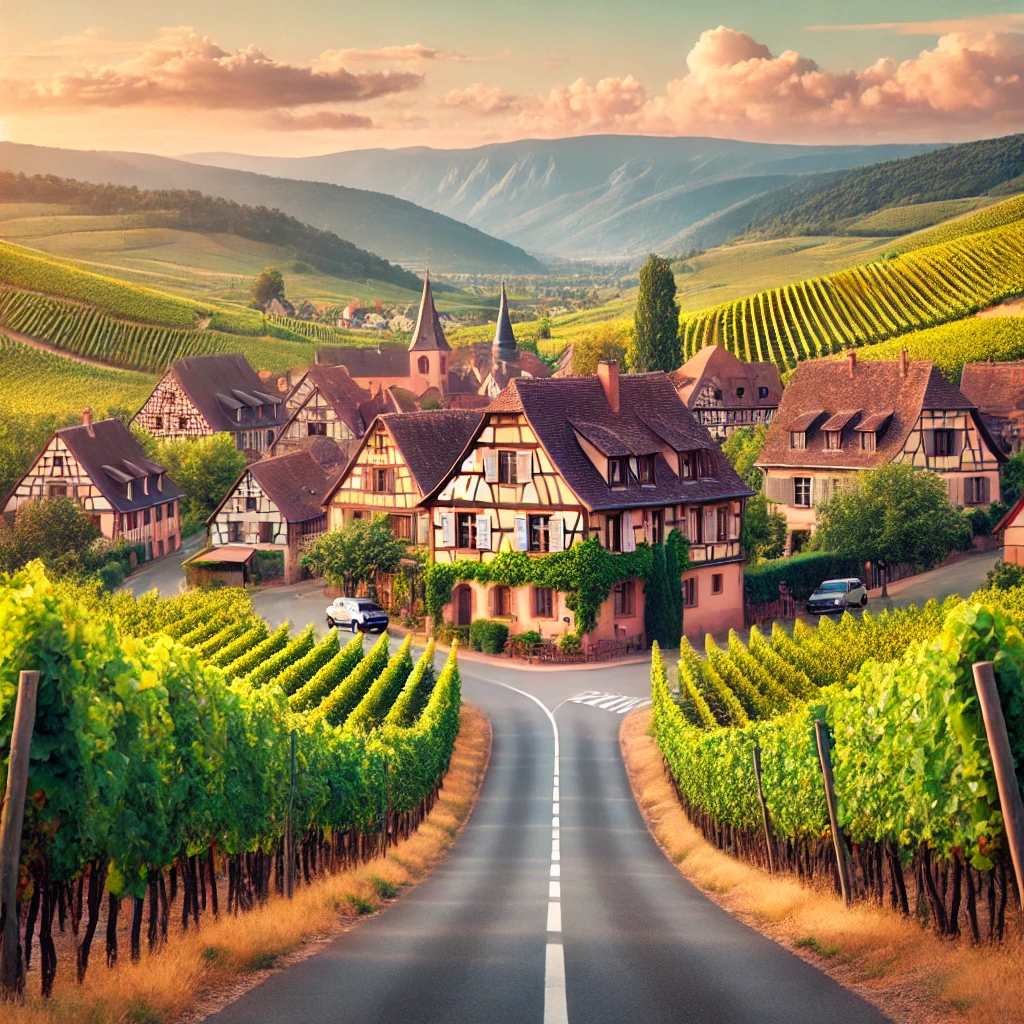
The Alsace Wine Route, one of France’s most picturesque drives, carries travelers through a breathtaking journey of vine-clad hills, medieval villages, and a rich winemaking tradition. Stretching over 170 kilometers from Thann to Marlenheim, this route invites those seeking a blend of natural beauty and cultural heritage. This meticulously maintained trail stitches together the story of two millennia of viniculture, making it a must-visit for wine enthusiasts and history aficionados alike.
A notable starting point is Strasbourg, a city where historical architecture mingles seamlessly with modern vibrance. Strasbourg’s Gothic cathedral, its expansive squares, and timber-framed houses speak volumes of its storied past. Just an hour south, Colmar offers another visual feast. Known for its well-preserved old town, with cobblestone streets and brightly colored homes, Colmar reflects the quintessence of Alsatian charm. Visitors can explore ‘La Petite Venise,’ an area of town interwoven with canals, further highlighting the city’s picturesque allure. A few kilometers away, Riquewihr stands out as a diamond of medieval architecture, seemingly untouched by time. This village is frequently cited as one of the most beautiful in France and provides numerous photo opportunities amidst its flower-adorned lanes and ancient towers.
No journey along the Alsace Wine Route would be complete without delving into its rich winemaking legacy. The region is predominantly known for its distinguished white wines, notably Riesling, Gewürztraminer, and Pinot Gris. Numerous family-run wineries dot the landscape, offering intimate tastings that allow visitors a personal connection with both the vintners and their crafted wines. These tastings provide an insight into the uniqueness of Alsatian grand crus, each sip a testament to meticulous artisanal tradition.
The best times to travel this enchanting route are late spring through early autumn, when the vines are lush and local festivals abound. Events such as the Colmar International Festival and Strasbourg Christmas Market attribute to the region’s perennial allure. With vibrant landscapes, historic locales, and exquisite wines, the Alsace Wine Route offers much more than mere scenic vistas—it provides an immersive experience into the heart of Alsace culture.
Camargue
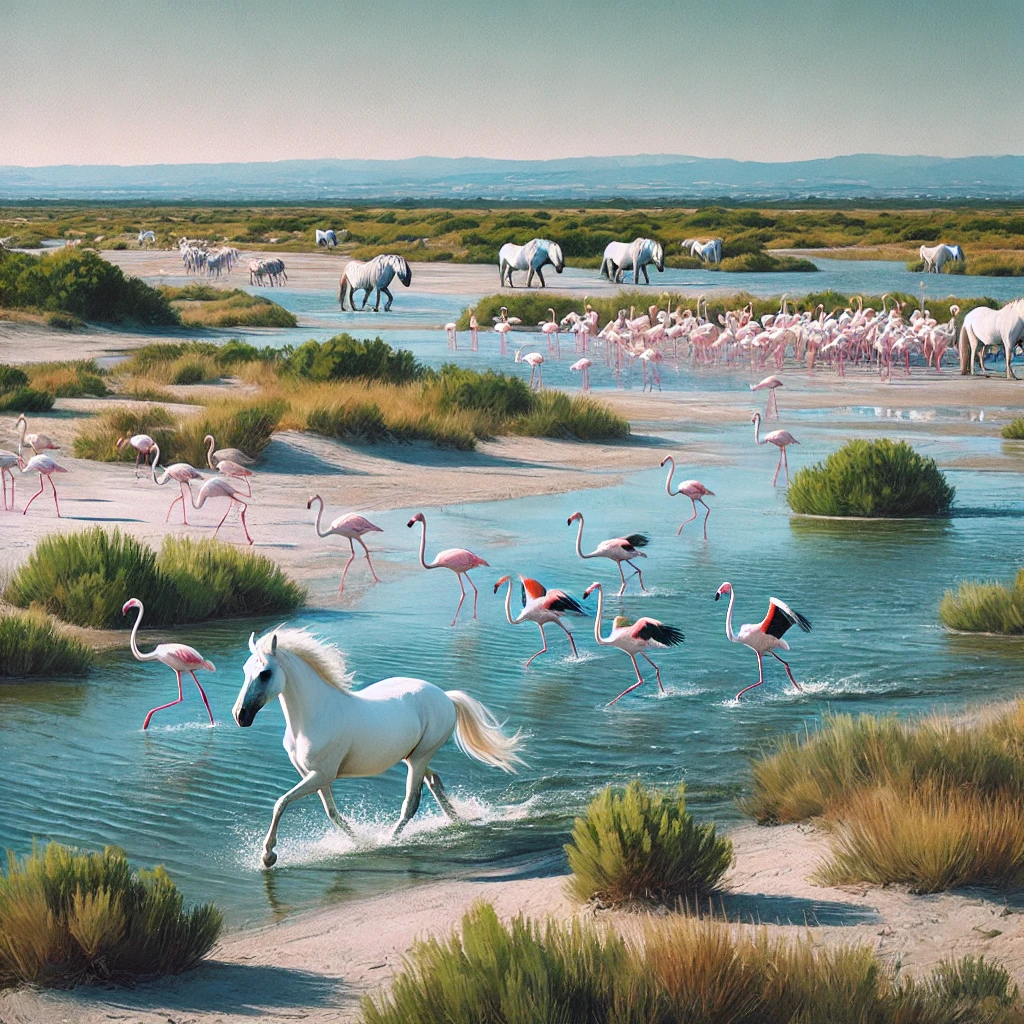
Nestled in the southern part of France, the Camargue region is a realm of natural wonders that beckons travelers with its unique and breathtaking landscapes. By taking a scenic drive through this picturesque area, visitors are afforded a unique opportunity to immerse themselves in the rich biodiversity of the Rhône Delta, renowned for its expansive wetlands, wild horses, and diverse birdlife.
Begin your journey from the charming town of Saintes-Maries-de-la-Mer, which serves as a magnificent gateway to the greater Camargue. This historic town offers visitors an authentic taste of local culture and history, being famous for its vibrant festivals and traditional folklore. Navigating the routes through and around this area, travelers can witness some of the region’s most stunning vistas. Driving along the D38 and D570 roads promises an unparalleled view of vast salt flats, lagoons, and marshes, showcasing the quintessential essence of Camargue’s natural beauty.
One of the exceptional ways to appreciate the region is through wildlife observation. The Camargue Natural Park is a haven for bird enthusiasts, home to around 400 species of birds including the iconic pink flamingos, herons, and storks. Venture on guided tours available from the Réserve Nationale de Camargue to increase your chances of spotting these majestic creatures in their natural habitat. Additionally, keep an eye out for the famed white horses and black bulls that roam the region freely, embodying the wild spirit of this extraordinary landscape.
Visiting in the spring or autumn provides the most favorable conditions for exploring Camargue. The weather is pleasant, and the migratory bird populations peak during these seasons. Furthermore, engaging in local cultural events such as the Romani pilgrimage in May offers a deeper insight into the traditions and customs of the area.
Driving through Camargue is not just about the view; it’s about embracing a slower pace of life, admiring the delicate interplay between land, water, and wildlife, and experiencing the enthralling beauty of one of France’s most untouched regions.
Corsica’s Coastal Roads
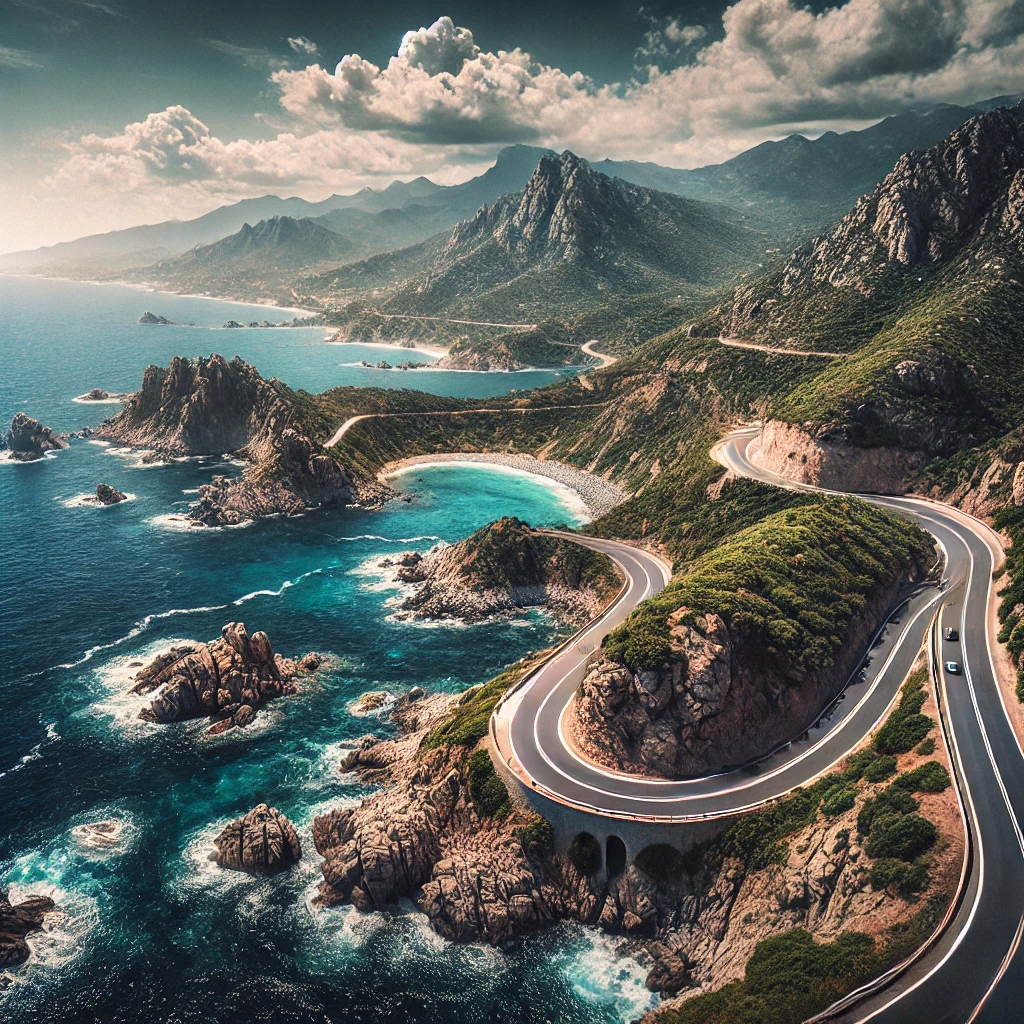
Corsica, often referred to as the “Island of Beauty,” boasts some of the most breathtaking coastal drives in France. The island’s rugged landscape, coupled with its crystal-clear waters and dramatic cliffs, provides an unforgettable experience for any traveler. Two key routes that epitomize Corsica’s scenic beauty are the Calanques de Piana and the Cap Corse scenic route.
The Calanques de Piana, a UNESCO World Heritage site, offers a mesmerizing drive through rocky cliffs that plunge into the azure sea below. The road winds through towering red granite formations, providing numerous stopping points for panoramic views and photographs. Travelers can visit the quaint village of Piana, renowned for its charming streets and local eateries. Here, one can sample Corsican delicacies such as “charcuterie” and “brocciu” cheese, fostering a full sensory immersion into the island culture.
An equally captivating route is the Cap Corse scenic drive, often described as a miniature version of the entire island. This route encompasses picturesque fishing villages, historic towers, and secluded beaches that define the peninsula’s varied landscape. A must-see town along this route is Nonza, with its unique black pebble beach and historic church perched on a cliff. A visit to Centuri, famed for its lobster fishing, is also highly recommended. Dining in local bistros here allows travelers to savor fresh seafood dishes, reflecting the island’s bountiful marine resources.
Navigating Corsica’s coastal roads requires attentive driving due to the narrow and winding nature of these paths. It is advised to drive carefully and allow extra time for the journey, thus ensuring safety and enabling the full enjoyment of the island’s spectacular views. Equipped with proper planning, travelers can thoroughly appreciate why Corsica’s coastal roads are celebrated for more than just their views. Whether basking in the natural wonders or indulging in the island’s culinary delights, driving through Corsica promises an adventure filled with remarkable sights and experiences.
Practical Tips for Scenic Road Trips in France
Embarking on a scenic road trip through France requires a bit of preparation to ensure a smooth and enjoyable journey. First and foremost, renting a car is essential. Reputable car rental companies are readily available at major airports and cities; booking in advance can often secure better rates and vehicle availability. Ensure you have a valid driver’s license, and be aware that an International Driving Permit (IDP) may be required for non-EU residents.
Navigation is key on French roads. While modern GPS devices and smartphone apps like Google Maps or Waze offer reliable directions, it’s wise to have a physical map as a backup. French roads are well-signposted, but rural areas can sometimes pose a challenge for electronic devices. Additionally, familiarize yourself with common French road signs and regulations to avoid any surprises.
The timing of your trip can significantly impact your experience. The best times to travel are during spring (April to June) and early autumn (September to October) when the weather is mild and the landscapes are stunningly picturesque. Summer months can be crowded and hot, while winter brings the risk of treacherous driving conditions, especially in mountainous regions.
Safety considerations should be a priority. Ensure your vehicle is equipped with essential safety items such as a reflective vest, warning triangle, and first aid kit, which are legally required in France. Drive on the right-hand side of the road and always adhere to speed limits, which can vary between urban, rural, and highway areas.
A few useful French phrases can go a long way in ensuring smooth interactions with locals. Basic phrases such as “Bonjour” (Hello), “Merci” (Thank you), “Où est…” (Where is…), and “Pardon” (Excuse me) can be invaluable. Furthermore, using a translation app can assist in more complex situations.
Pack wisely for your journey, considering the varying weather conditions you might encounter. Layers, comfortable footwear, and sun protection are crucial. Don’t forget to bring necessary documents, a phone charger, and snacks for the road.
Lastly, lodging options range from charming bed and breakfasts to luxurious châteaux and modern hotels. Booking accommodations in advance is recommended, particularly during peak travel seasons. Researching lodging along your route guarantees you find the perfect place to rest and recharge each night.With these practical tips in mind, your scenic road trip through France is sure to be an unforgettable adventure, filled with breathtaking views and memorable experiences.
